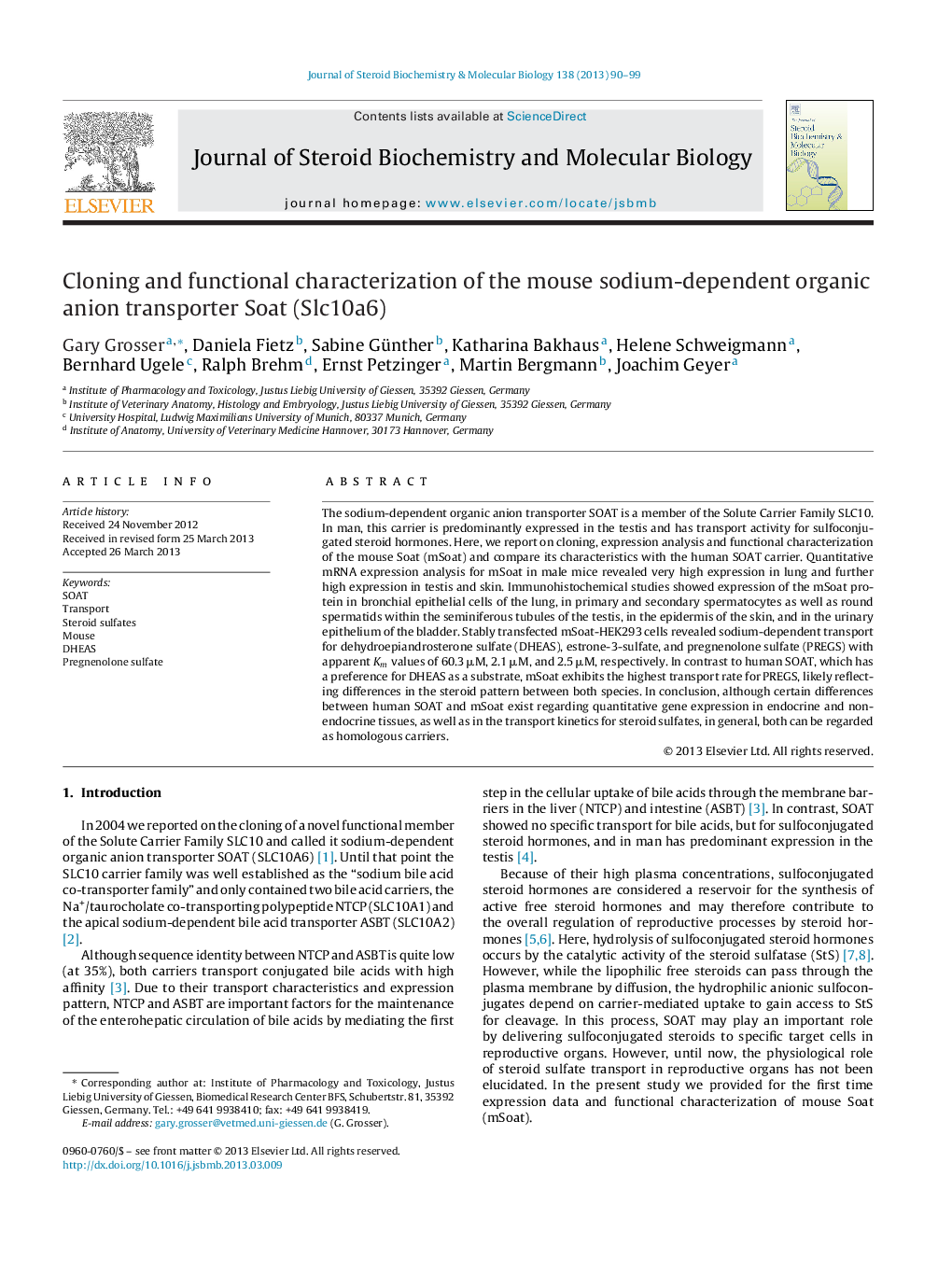| Article ID | Journal | Published Year | Pages | File Type |
|---|---|---|---|---|
| 8338906 | The Journal of Steroid Biochemistry and Molecular Biology | 2013 | 10 Pages |
Abstract
The sodium-dependent organic anion transporter SOAT is a member of the Solute Carrier Family SLC10. In man, this carrier is predominantly expressed in the testis and has transport activity for sulfoconjugated steroid hormones. Here, we report on cloning, expression analysis and functional characterization of the mouse Soat (mSoat) and compare its characteristics with the human SOAT carrier. Quantitative mRNA expression analysis for mSoat in male mice revealed very high expression in lung and further high expression in testis and skin. Immunohistochemical studies showed expression of the mSoat protein in bronchial epithelial cells of the lung, in primary and secondary spermatocytes as well as round spermatids within the seminiferous tubules of the testis, in the epidermis of the skin, and in the urinary epithelium of the bladder. Stably transfected mSoat-HEK293 cells revealed sodium-dependent transport for dehydroepiandrosterone sulfate (DHEAS), estrone-3-sulfate, and pregnenolone sulfate (PREGS) with apparent Km values of 60.3 μM, 2.1 μM, and 2.5 μM, respectively. In contrast to human SOAT, which has a preference for DHEAS as a substrate, mSoat exhibits the highest transport rate for PREGS, likely reflecting differences in the steroid pattern between both species. In conclusion, although certain differences between human SOAT and mSoat exist regarding quantitative gene expression in endocrine and non-endocrine tissues, as well as in the transport kinetics for steroid sulfates, in general, both can be regarded as homologous carriers.
Related Topics
Life Sciences
Biochemistry, Genetics and Molecular Biology
Biochemistry
Authors
Gary Grosser, Daniela Fietz, Sabine Günther, Katharina Bakhaus, Helene Schweigmann, Bernhard Ugele, Ralph Brehm, Ernst Petzinger, Martin Bergmann, Joachim Geyer,
